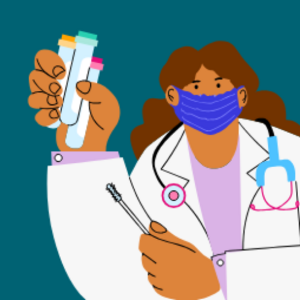
Ensure your health. Get tested today.
Convenient lab testing at your fingertips at more than 5,000 locations nationally. Consult with a doctor, or get tested on your own.

Hair analysis is a diagnostic tool that examines the chemical composition of hair to provide insights into an individual's health, nutrition, and exposure to various substances, according to genome.gov. They explain that by analyzing hair samples, professionals can detect the presence of heavy metals, toxins, and nutrient deficiencies, which can offer valuable information about a person's overall well-being. This non-invasive method has gained popularity in various fields, including medicine, forensic science, and wellness assessments.
There are different types of hair analysis, each tailored to specific screening purposes. For instance, toxicology hair analysis focuses on identifying drug use or exposure to harmful substances, while nutritional hair analysis assesses the levels of essential minerals and vitamins in the body. Additionally, some analyses may be geared towards understanding metabolic disorders or environmental exposure, making hair analysis a versatile tool for health professionals and researchers alike.
Hair analysis can serve as a powerful diagnostic tool, offering a wide range of insights into an individual's health and lifestyle, according to genome.gov. By examining the biochemical makeup of hair strands, professionals can identify various substances and conditions that may not be easily detectable through other testing methods.
Hair analysis has versatility and importance in both medical and forensic contexts, according to genome.gov. Some of the things that hair testing can detect are:
Heavy metals: Detection of toxic elements such as lead, mercury, and arsenic.
Genetic disorders: Identification of specific genetic markers linked to hereditary conditions.
Family links: Establishing familial connections through genetic analysis.
Drug consumption: Screening for the presence of illicit drugs or prescription medications.
Nutritional deficiencies: Assessing levels of essential vitamins and minerals that may indicate dietary imbalances.
Hormonal imbalances: Evaluating hormone levels that can affect overall health and well-being.
Genome.gov also notes that the results of hair testing may vary based on the quality of the sample — and some tests may require strands of hair while others are hair follicle tests. Other types of forensic drug tests include urine tests and DNA analysis. For a hair follicle test, a technician will get strands of hair close to your scalp (where your hair grows) to ensure proper medical testing.
Forensic hair tests need only a microscopic hair to perform a DNA test.
The hair analysis procedure involves several key steps that ensure accurate and reliable results, according to the North Carolina Prosecutors Resources. They explain that this section will outline the process from sample collection to laboratory analysis, providing insight into how hair can reveal important information about an individual's health and exposure to various substances. Understanding this procedure is essential for appreciating the science behind hair analysis and its applications in various fields.
The process begins with the collection of a hair sample, typically taken from the scalp or other body areas where hair is present. A small amount of hair, usually about 1.5 inches in length, is cut as close to the scalp as possible to ensure that the sample reflects the individual's recent health status. Care is taken to avoid contamination, and the sample is often placed in a clean, sealed container. Patients may be instructed to avoid hair treatments, such as dyeing or chemical processing, for a certain period before the collection to ensure the integrity of the sample.
Once the sample is collected, it is sent to a specialized laboratory for analysis. In the lab, technicians prepare the hair sample by washing it to remove any external contaminants and then cutting it into smaller segments for testing. Various analytical techniques, such as mass spectrometry or inductively coupled plasma mass spectrometry (ICP-MS), are employed to determine the presence and concentration of specific substances within the hair. The results are then compiled into a comprehensive report, which can be used by healthcare providers or researchers to assess an individual's health status, identify potential issues, or guide treatment decisions.
To prepare for a hair analysis, KidsHealth.org recommends that individuals should avoid any hair treatments, such as coloring, perming, or chemical straightening, for at least four to six weeks prior to the sample collection. This helps to prevent any external substances from contaminating the hair and affecting the test results. Additionally, it is advisable to refrain from using hair products, like gels, sprays, or oils, in the days leading up to the analysis. When collecting the sample, it is important to follow the instructions provided by the healthcare professional or laboratory, including the specific area from which the hair should be taken. Maintaining a healthy diet and lifestyle leading up to the test can also support accurate assessments of nutritional levels and overall health.
If you're looking to gain valuable insights into your health and well-being, scheduling lab tests, including drug tests and hair analysis testing, with SolvHealth is a fantastic step forward. SolvHealth makes it easy to find and book a variety of lab tests tailored to your needs, all from the comfort of your home. With a user-friendly platform that connects you to reputable labs and healthcare providers, you can quickly access essential screenings that can help identify nutritional deficiencies, toxic exposures, and much more. Don't wait to take charge of your health—visit SolvHealth today to explore your testing options and schedule your appointment with confidence!
Hair analysis is used to provide insights into an individual's health, nutrition, and exposure to various substances. It can detect heavy metals, genetic disorders, drug consumption, and more.
A small amount of hair, usually about 1.5 inches in length, is cut as close to the scalp as possible. The sample is then placed in a clean, sealed container to avoid contamination.
Hair analysis can detect a wide range of substances and conditions, including heavy metals, genetic disorders, drug consumption, nutritional deficiencies, and hormonal imbalances.
Avoid any hair treatments, such as coloring, perming, or chemical straightening, for at least four to six weeks prior to the sample collection. It is also advisable to refrain from using hair products in the days leading up to the analysis.
In the lab, the hair sample is washed to remove any external contaminants and then cut into smaller segments for testing. Various analytical techniques are employed to determine the presence and concentration of specific substances within the hair.
You can schedule a hair analysis test with SolvHealth, which can provide valuable insights into your health and well-being.
Yes, hair analysis can detect the presence of heavy metals, toxins, and nutrient deficiencies.
A nutritional hair analysis can assess the levels of essential minerals and vitamins in the body, providing valuable information about a person's nutritional status.

Convenient lab testing at your fingertips at more than 5,000 locations nationally. Consult with a doctor, or get tested on your own.